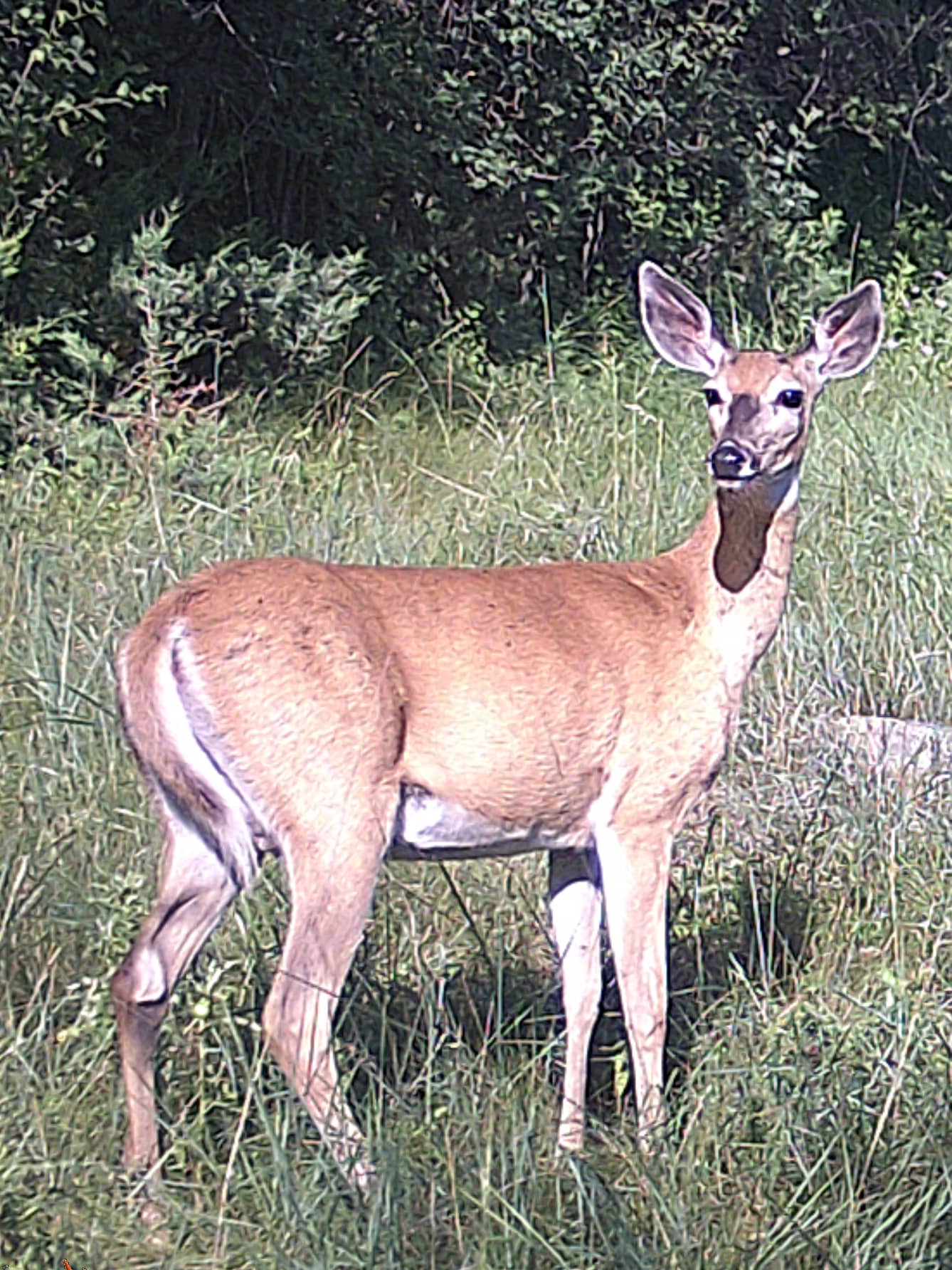
EHD is a virus that is spread by midges in late summer and early fall, and predominantly affects whitetailed deer. With a hard frost which normally kills the midges not coming until this week’s snow and unseasonably cold temperatures, the disease likely impacted the state’s western whitetail herds, prompting the offer of a refund by the NDG&F department for firearms hunters in impacted units. Simonson Photo
By Nick Simonson
Throughout late summer and early fall, the North Dakota Game & Fish Department (NDG&F) had received reports of dead and sick deer on the landscape throughout southwestern North Dakota.
As September progressed into October, the reports remained steady and expanded throughout the western half of the state. Charlie Bahnson, NDG&F Veterinarian, confirmed the growing presence of epizootic hemorrhagic disease (EHD) on the landscape shortly after the first reports came in August. Carried by biting midges, the viral disease sickens and often kills big game, but predominantly whitetailed deer, and only a hard frost which kills the transmitting insects brings the season of transmission to an end. With the week’s unseasonable weather, the end of the threat is likely here.
“The reports maintained the same amount and frequency up until this week,” Bahnson relays about what was coming in from the field, adding “it seemed to be a steady stream from August up until the snow on the ground that is hopefully ending things.”
While the impact of EHD on whitetail populations in the western reaches of the state is yet to be determined, the NDG&F has issued an option to the hunters holding more than 9,000 whitetail deer tags for firearms units 3D1, 3D2, 3E1, 3E2, 3F1, 3F2, 4A, 4B, 4C, 4D, 4E and 4F, to turn those licenses in to the agency by Nov. 5 and receive a refund and restoration of their previous preference points for next year’s lottery.
It is unlikely, however, that many sportsmen will partake of the refund process, as the impact of EHD, according to Bahnson, has been very sporadic, with some areas within townships seeing high mortality, and other places a few drainages over seeing none. With the increase of hunters in the field for the recent start of upland game seasons, and the agency requesting help from them in reporting possible instances of EHD, while the disease has been widespread, it likely has not had a major impact on populations based on their reports. The results will be better reflected in the over-winter deer surveys conducted by the NDG&F and from hunter success reports in the affected units coming in after the firearms deer season.
The last time a refund option was issued to hunters in the wake of widespread EHD occurring in the state’s deer herd was in 2011. A drier year, that season saw an uptick in the virus and since that time there have not been any major outbreaks. By anecdotal accounts within the agency’s staff the epidemic of EHD in 2011 was far more pervasive and impactful than this season’s. While there is always some of the virus and a population of midges which spread it on the landscape each summer, due to herd immunity and lower densities of the illness and its vector, it may not be as severe as seen in 2020 and nine years prior.
In both seasons, the disease also impacted the state’s pronghorn populations, though at a far lower rate than whitetails. As to mule deer, they may be infected with the virus, however Bahnson states that biologists theorize it takes more virus to impact them and they don’t utilize the typically damper spaces frequented by whitetailed deer such as riparian areas and sloughs, and thus mule deer have lower exposure to the midges.
“To date we have not had any reports or confirmations in mule deer, but we have actually detected it in a handful of pronghorn throughout the southwest; all the pronghorn have been single reports, we haven’t had any reports of multiple dead pronghorn, but they seem to have been affected to some degree,” Bahnson explains, “I think it’s pretty plausible that mule deer need a higher amount of virus to get infected or enough to develop disease,” he concludes.
With the first snow and cold temperatures lamented by many this week, including sportsmen, and the unseasonable chill expected to linger into Halloween, it is likely that some good has come out of the change in the weather. For more information on EHD, visit gf.nd.gov/wildlife/diseases/ehd
